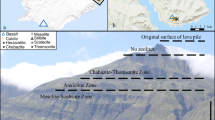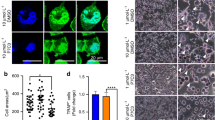Abstract
CAREFUL determinations have been made of the atomic weight of calcium extracted from two very old potassium-rich deposits—one a felspar from Rhiconich, Sutherlandshire, estimated at 1,000 million years old, the other a pegmatite from Portsoy, Banffshire, probably about 600 million years old. Each mineral contained approximately 9 per cent K2O and less than 0.3 per cent CaO, so that there seemed reasonable grounds for hope that the accumulation of the calcium isotope with mass 41, through the slow radioactive disintegration of the potassium in the deposit, might be sufficient to induce a detectable change in the atomic weight from the normal value.
This is a preview of subscription content, access via your institution
Access options
Subscribe to this journal
Receive 51 print issues and online access
$199.00 per year
only $3.90 per issue
Buy this article
- Purchase on SpringerLink
- Instant access to full article PDF
Prices may be subject to local taxes which are calculated during checkout
Similar content being viewed by others
References
Z. anorgan. Chem., 195, 1 ; 1931.
Ann. Rep. Chem. Soc., 27, 310 ; 1930.
Author information
Authors and Affiliations
Rights and permissions
About this article
Cite this article
KENDALL, J., SMITH, W. & TAIT, T. Calcium Isotope with Mass 41 and the Radioactive Half-Period of Potassium. Nature 131, 688–689 (1933). https://doi.org/10.1038/131688b0
Issue date:
DOI: https://doi.org/10.1038/131688b0
This article is cited by
-
Gli elementi debolmente radioattivi
Il Nuovo Cimento (1940)



